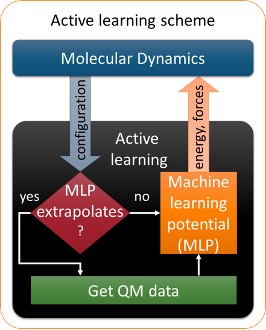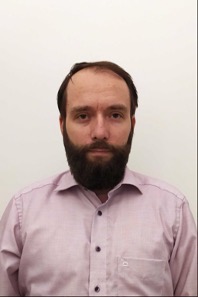Machine-Learning Interatomic
Potentials on the Way to High-Throughput Calculations
Alexander
Shapeev*
Skolkovo
Institute of Science and Technology, Moscow, Russia
ABSTRACT: Machine-learning
interatomic potentials are a promising tool combining the efficiency of
empirical interatomic potentials and accuracy of quantum-mechanical models such
as the density functional theory (DFT). The most resource-consuming part of
using machine-learning potentials is the manual labor put in tediously
constructing the training set. Active learning algorithms come to rescue –
combined with such algorithms, machine-learning potentials can be constructed
automatically for a given problem thus seamlessly accelerating DFT – see Figure
1. This paves the way for machine-learning potentials to become an important
part of high-through materials design. Machine-learning potentials commit a
small error compared to DFT, but this error is often smaller than the error of
DFT as compared to the experimental data. However, in some applications
machine-learning potentials can be used as a screening tool thus completely
eliminating their approximation error in the final answer.
In my presentation I will introduce these
algorithms and demonstrate how these algorithms can yield a speedup of several
orders of magnitude in a number of applications, including construction of
convex hulls of stable alloy structures, computing vibrational and
configurational free energy of alloys, and diffusion of point defects.

Figure
1. Active learning of interatomic potential
automatically accelerating quantum-mechanical calculations.
Keywords:machine-learning
interatomic potentials, active learning, moment tensor potentials

Alexander Shapeev has completed his PhD in Mathematics at the age of 28 years from National University of Singapore. After two postdoc projects on classical computational methods, he started developing new methodologies in computational materials science as he assumed an Assistant Professor position at Skolkovo Institute of Science and Technology (Moscow, Russia). He is now an Associate Professor at the same institution and author of more than 40 peer-review papers one of which was awarded the Outstanding Paper Prize of the Society of Industrial and Applied Mathematics (United States).